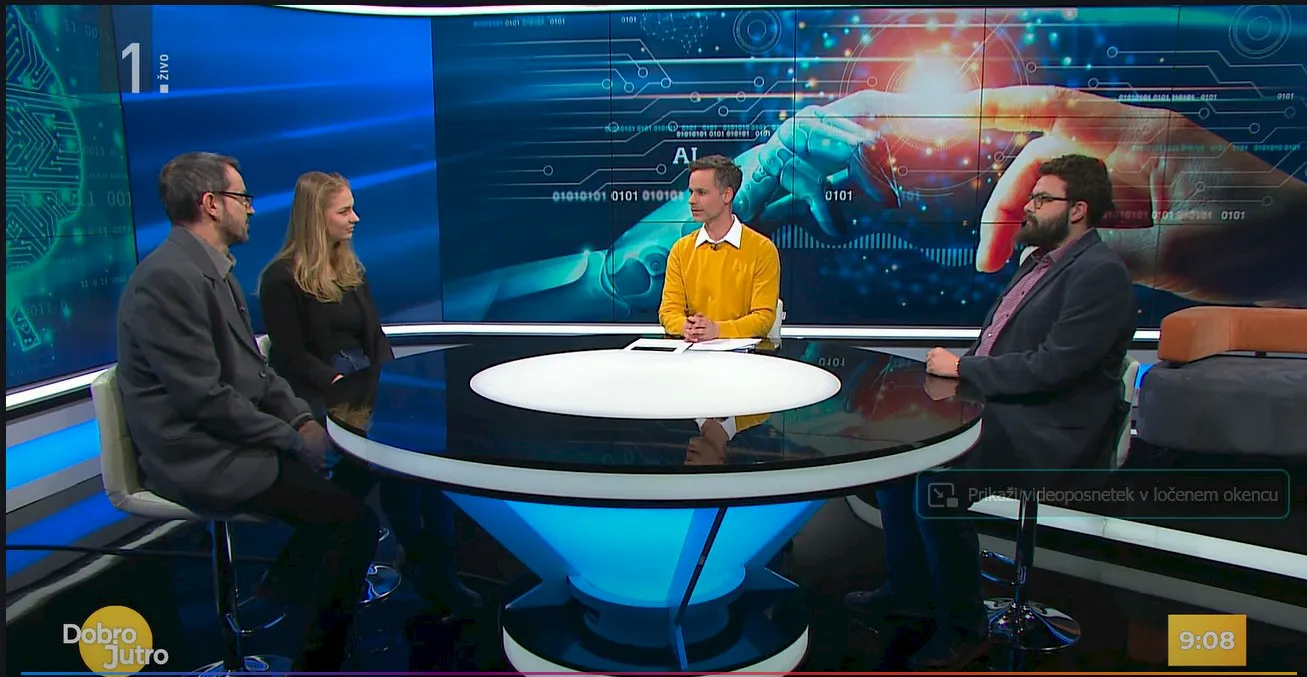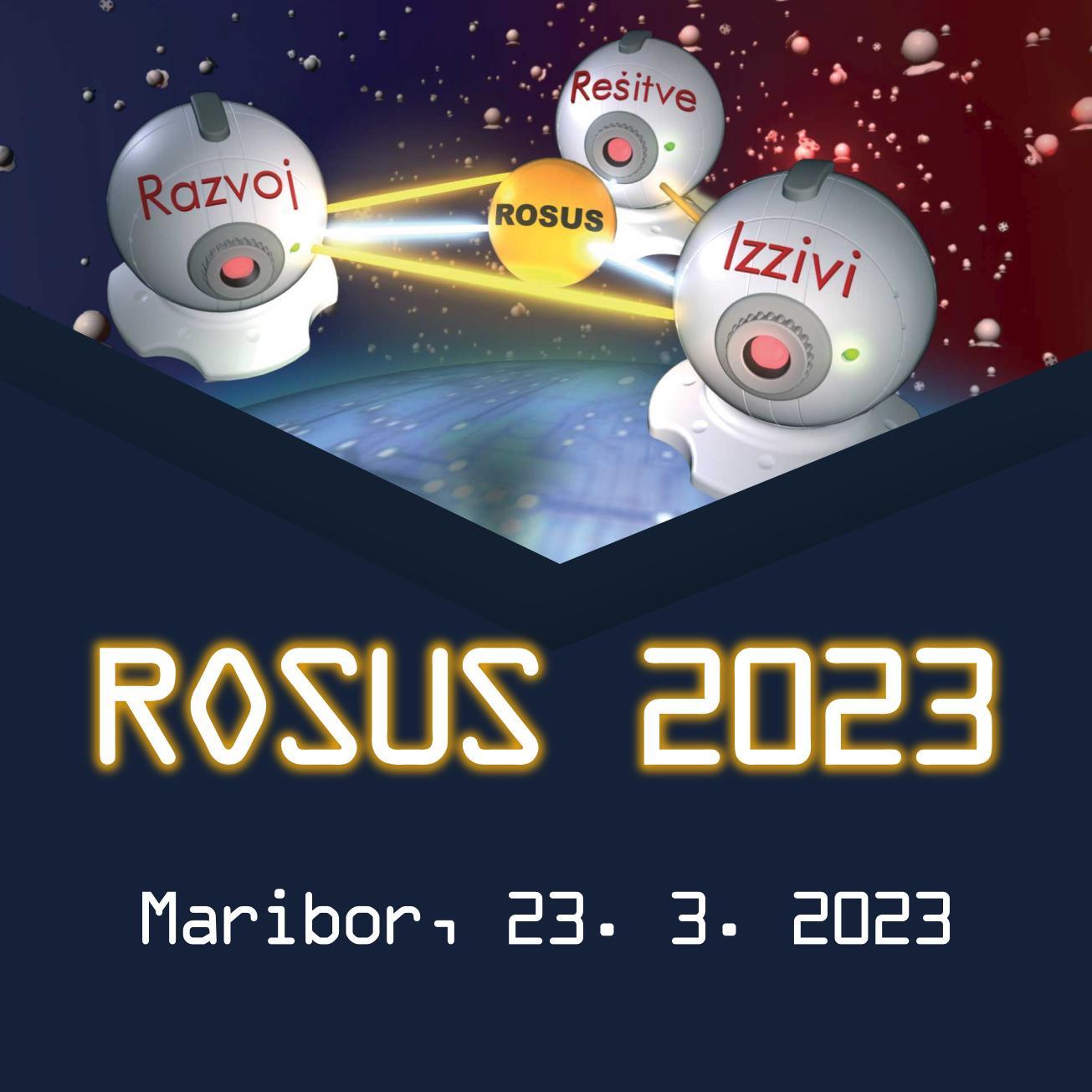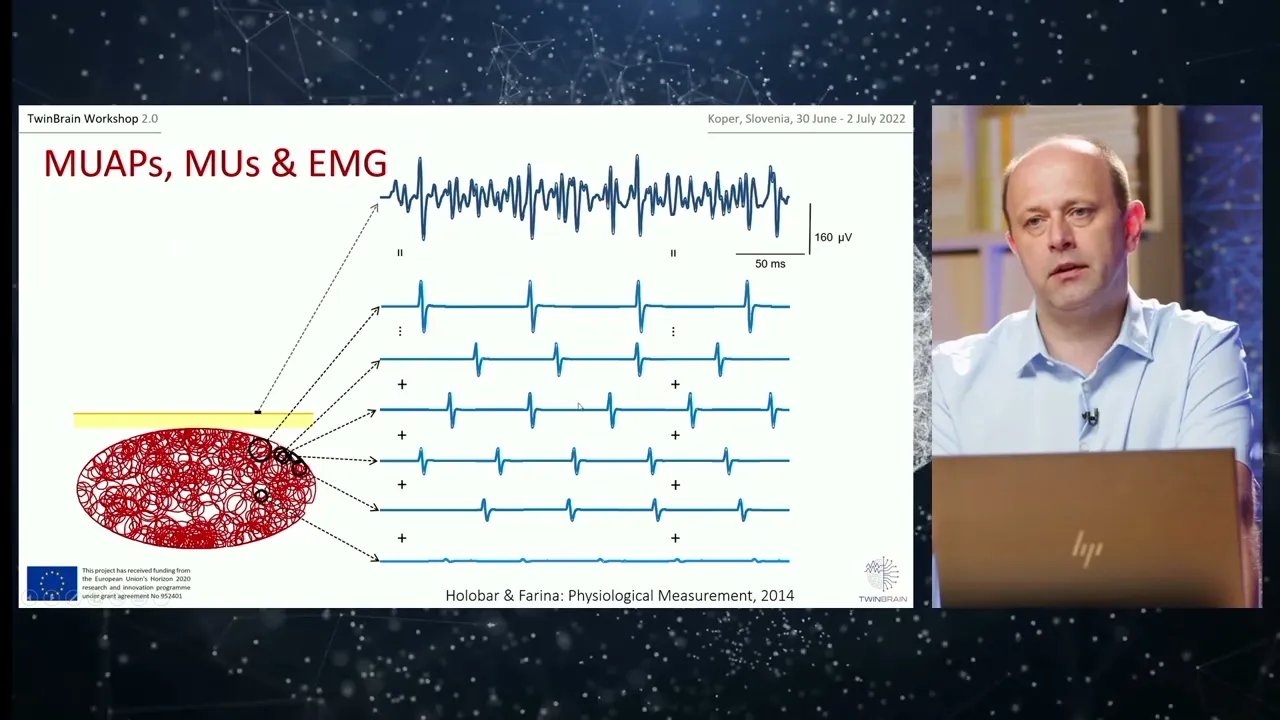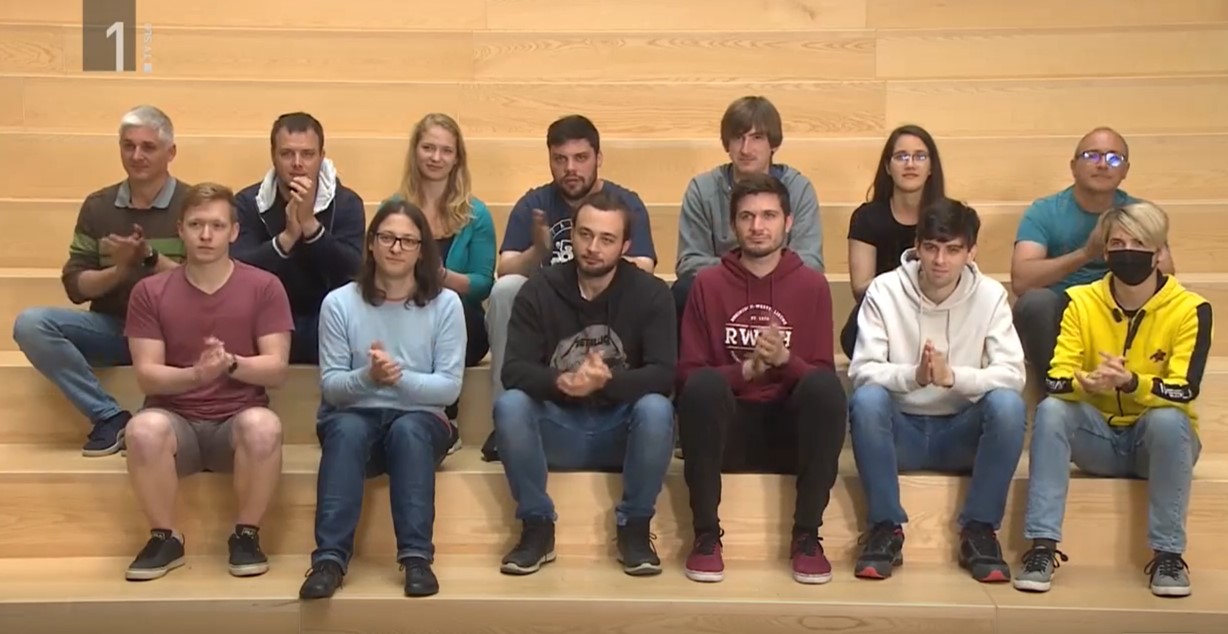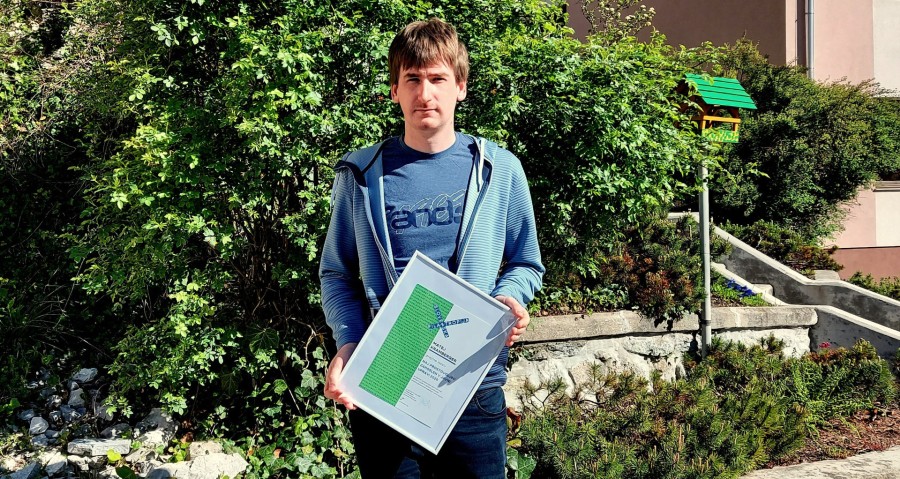Author: Aleš Holobar
Mentor: Prof. Dr. Damjan Zazula
Date: Oct. 26, 2004
Blind decomposition of convolutive mixtures of
close-to-orthogonal pulse sources applied to surface
electromyograms
Keywords: digital signal processing, blind source separation, multi-channel blind deconvolution,
pulse sources, time-frequency analysis, higher-order statistics, w-slices, Newton-Gauss
optimization, inverse correlation matrix based method, MIMO system identification,
surface electromyographic signals, surface EMG decomposition, motor unit, innervation
pulse train, motor unit action potential
UDK: 621.391:61(043.3)
Abstract: In this doctoral dissertation blind decomposition of convolutive mixtures of close-toorthogonal
pulse source signals is addressed. Three novel decomposition approaches
based on the time-frequency analysis, higher-order statistics and algebraic approach are
developed. Furthermore, necessary conditions for the reconstruction of complete pulse
sequences and their impulse responses are investigated and a thorough and detailed study
of the factors influencing its performance, such as noise and non-orthogonality of
sources, are carried out. Although derived in the case of more measurements than sources
(overdetermined system), the algebraic approach is extended to slightly underdetermined
systems (with more sources than measurements). In contrast with other decomposition
techniques, the proposed approaches work well also in the case of not completely
orthogonal source signals. Finally, all the proposed solutions are applied to the surface
electromyographic (EMG) signals.
The thesis begins with an overview of existing methods and techniques for blind source
separation. The methods for both multiplicative and convolutive cases are critically
assessed and mutually compared. Next, a brief introduction to the physiology of the
human muscles is given. In order to provide the basis for evaluation of the decomposition
results on the real surface EMG signals, the properties of the motor unit (MU)
innervation pulse trains, and generation of the motor unit action potentials (MUAPs) at
the end-plate are explained. The factors influencing the shape and amplitudes of MUAPs,
detected at the skin surface, are also identified. Afterwards, the decomposition methods
for both intra-muscular and surface EMG signals are critically evaluated and the
influence of the superimposed MUAPs studied. Finally, the assumed data model of
surface EMG signals is introduced and its main limitations and assumption clarified.
Surface EMG signals are modelled as a multi-channel, linear, shift-invariant multipleinput-
multiple-output (MIMO) system.
In the second part of this dissertation, three different approaches to blind source
separation of the convolutive mixtures of general pulse source signals are derived. Firstly,
the over-determined case is assumed (the case with more measurements than sources) and
two novel approaches introduced. The first one utilizes the Wigner-Ville time-frequency
distributions and enables the reconstruction of both the pulse source signals and the
corresponding MIMO system responses. The second approach enables automatic
reconstruction of the MIMO system responses and is based on higher-order cumulants.
Next, the decomposition is extended to the underdetermined case (the case with more
sources than measurements) and a completely novel approach to blind deconvolution of
pulse source signals, so called inverse correlation matrix based method, is derived.
The introduced approaches are tested on both synthetic and real surface EMG signals.
Firstly, the impacts of the number of active MUs, their firing frequencies, depth in the
muscle tissue, etc., as well as the influence of noise are evaluated on the synthetic signals.
The results prove the superiority of the inverse correlation based method. Applying it to
the over-determined case at a high signal to noise ratio (SNR), almost all simulated MU
innervation pulse trains are completely reconstructed. In the under-determined case with
number of sources exceeding the number of measurements by factor 1.4, approximately a
half of the simulated MUs are completely identified. The performance also drops with the
SNR. At SNR of 0 dB, approximately 30 % of the MUs identified at SNR = 20 dB are
reconstructed. In all cases, the decomposed innervation pulse trains exhibit a perfect
match with the reference synthetic source signals. The other two methods are
significantly less efficient.
Finally, all three decomposition approaches are applied to the real surface EMG signals,
recorded during an isometric 5 % and 10 % contractions of the dominant biceps brachii
muscle of 9 healthy young male subjects. Again, the inverse correlation based method
proves to be superior. Altogether, 30 and 56 MUs’ innervation pulse trains are
completely reconstructed from the 5 % and 10 % muscle contraction measurements,
respectively. The reconstructed MU firing patterns are compared against various
physiologically induced limitations and prove to be in agreement with expectations and
careful visual analysis.














